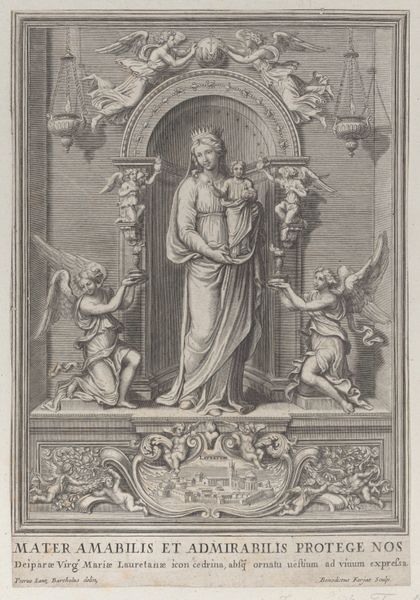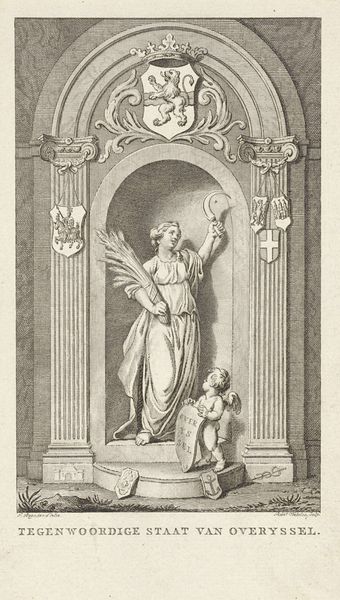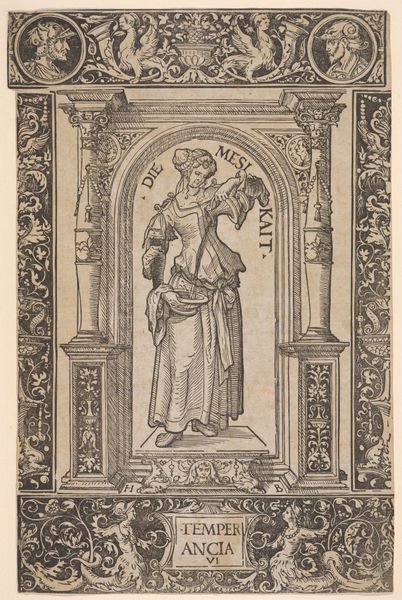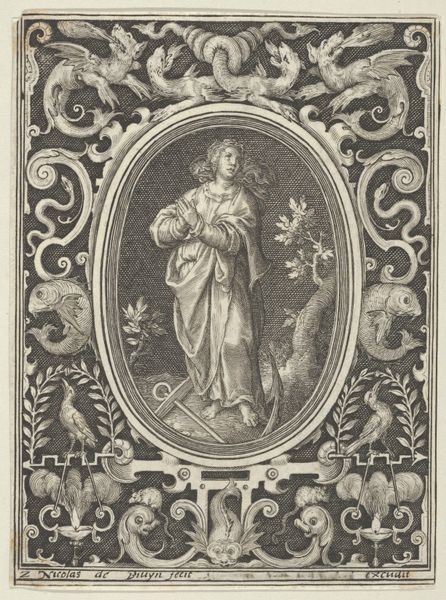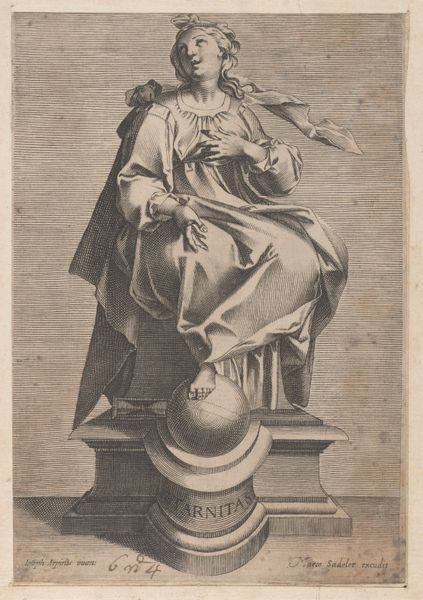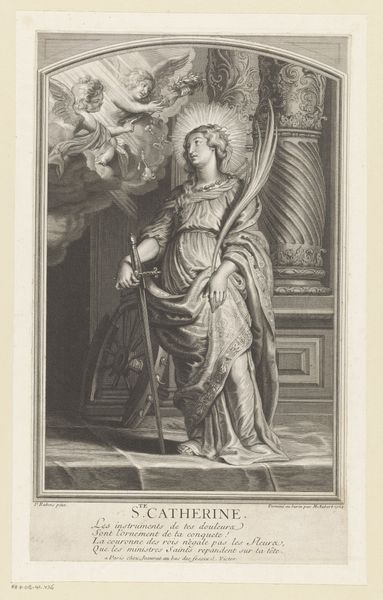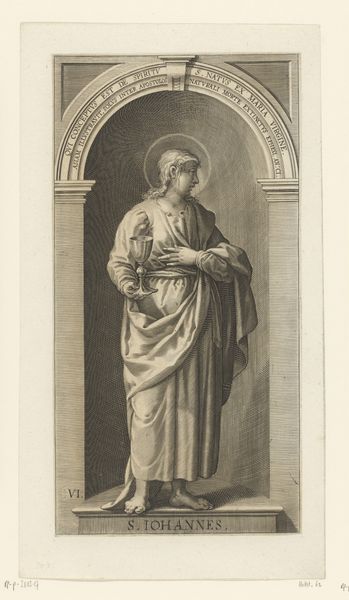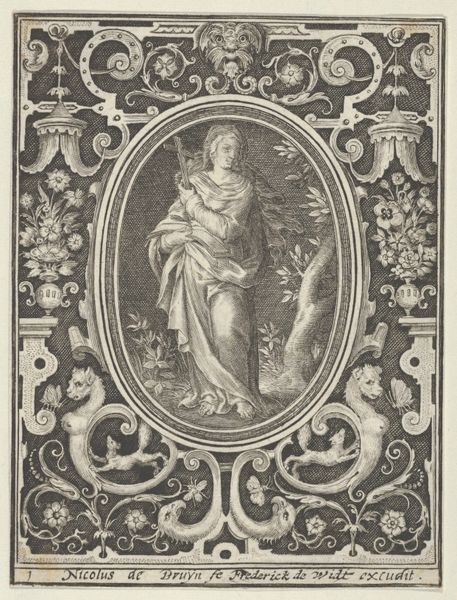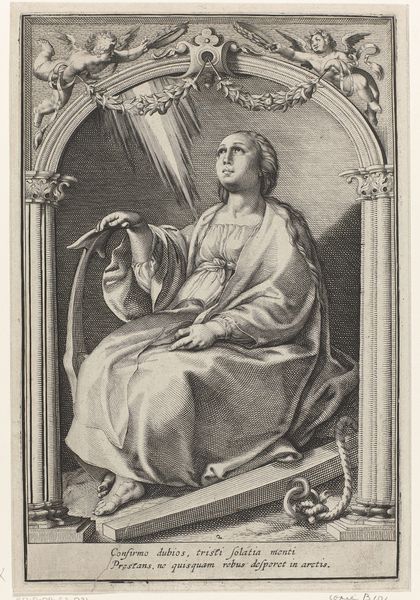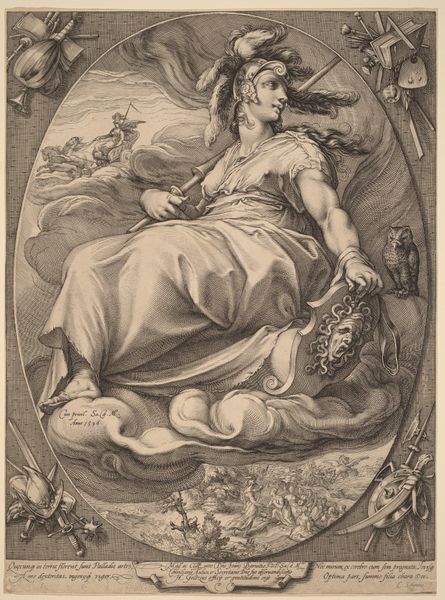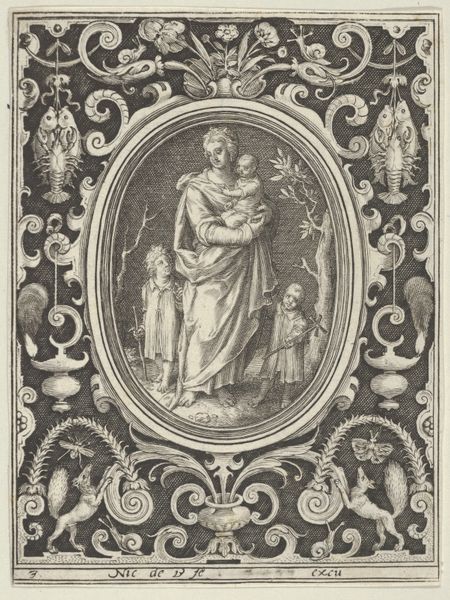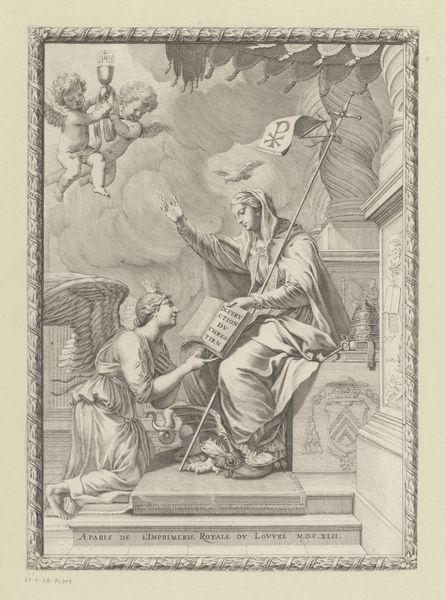
The Chapel of the Enfants-Trouvés in Paris: Sainte Geneviève des Ardents 1757
0:00
0:00
drawing, print, sculpture, charcoal
#
portrait
#
drawing
#
baroque
# print
#
sculpture
#
charcoal drawing
#
figuration
#
sculpture
#
charcoal
#
history-painting
#
charcoal
Dimensions: Sheet (Trimmed): 20 9/16 × 11 1/4 in. (52.3 × 28.6 cm)
Copyright: Public Domain
Curator: This print, dating to 1757, is entitled "The Chapel of the Enfants-Trouvés in Paris: Sainte Geneviève des Ardents" and attributed to Étienne Fessard. Editor: The linear precision really catches the eye; the way light seems to both caress and define the drapery is compelling, isn't it? I am curious to know more about this technique! Curator: Fessard was a master engraver, so it's likely this was a collaborative process with the original artist, meticulously translating a painting or sculpture into print. The labour involved, from the original artwork to the final print available for wider consumption, speaks to art production during the period. The cost was, of course, considerably lower. Editor: And it democratizes the image, giving greater access to those who wouldn't be able to afford to view a commissioned statue in a private chapel. Beyond that, this piece tells us about the cultural importance of Sainte Geneviève, particularly in Paris at that time. Her image connects deeply to themes of protection and guidance, seen also by the depiction of the lamb. Curator: That's right. The architecture of the chapel itself also becomes important to understand here. Who were the patrons? What role did such institutions have in shaping the social and political landscape? That becomes fundamental to understanding art from this period. And the prints allow this information to become more widely available for scholarly investigation. Editor: Looking closely at the architectural elements, I wonder about the artistic influences and patronage networks surrounding the construction of the Chapel of the Enfants-Trouvés itself. This image gives us the material details we need to start asking some broader socio-political questions. It encourages us to dive deeper into history! Curator: Exactly! What better lens to use than a piece such as this print, made by artisanal labor, as a lens into artistic, societal and class production as a whole? Editor: Absolutely, and for a deeper insight into Parisian devotional culture during the mid-18th century, exploring the intersection of art and history illuminated by this image is essential.
Comments
No comments
Be the first to comment and join the conversation on the ultimate creative platform.
